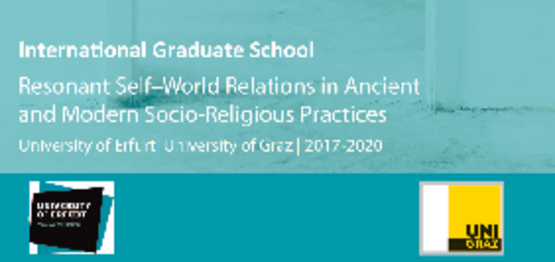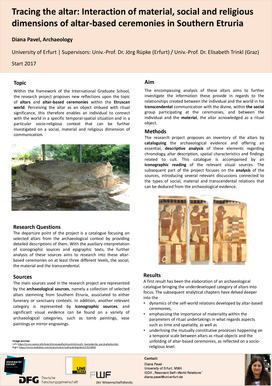Diana Pavel
Platform of encounters or a table for offerings? The aspects of the Etruscan altar in the public and the private sphere in the 7th-2nd centuries B.C.
Within the field of studies of ancient religions and mentalities regarding the transcendent relationship between human and the divine, the Etruscan civilization of the Italian peninsula has always offered interesting perspectives, since its many specificities and peculiarities have managed to bestow researchers with a significant number of research questions, the Etruscans being seen as a people deeply rooted in religious behaviour.
My research subject within the research programme “Resonant Self- World Relations in Ancient and Modern Socio-Religious Practices” from the Max-Weber-Kolleg concerns a comparative approach of the material data regarding the disposition of sacral physical space in the public and the private sphere as an element of ritual behaviour inside the Etruscan society. More specifically, the purpose of this project is to analyse the complex meaning of the altar in the public and in the private sphere, taking into account its role as a point of contact between the mundane and the divine world through its intrinsic ritual characteristic.
As such, the project suggests a reading of the dimensional perspectives of the altar seen as a resonant place from which the individual finds himself in connection with the world from a specific temporal and spatial situation and in a particular socio-religious context. The type of resonant relationship that the individual has with the world can, therefore, be inferred up to a certain extent from the meaning given to the altar of the public and monumental sanctuary and to the altar from inside or in the vicinity of the tomb, since their special attributes can pinpoint to a different individual voice in each context.
Internationale Graduiertenschule





